Abstract
The statistical difficulties of estimating cancer risks from low doses of a carcinogen are illustrated by examples from radiation carcinogenesis. Although more is known about dose-response relationships for ionizing radiation than for any other environmental carcinogen, estimates of cancer risk from low radiation doses have been extremely controversial; disagreements by factors of 100 or more are not uncommon. Direct estimation, based on data from populations exposed to low doses, is usually impracticable because of sample size requirements. Curve-fitting analyses, by which higher dose data determine lower dose risk estimates, require simple dose-response models if the estimates are to be statistically stable. The current level of knowledge about biological mechanisms of carcinogenesis dose not usually permit the confident assumption of a simple model, however; thus frequently the choice is between unstable risk estimates obtained using general models and statistically stable estimates whose stability depends on arbitrary model assumptions.
Full text
PDF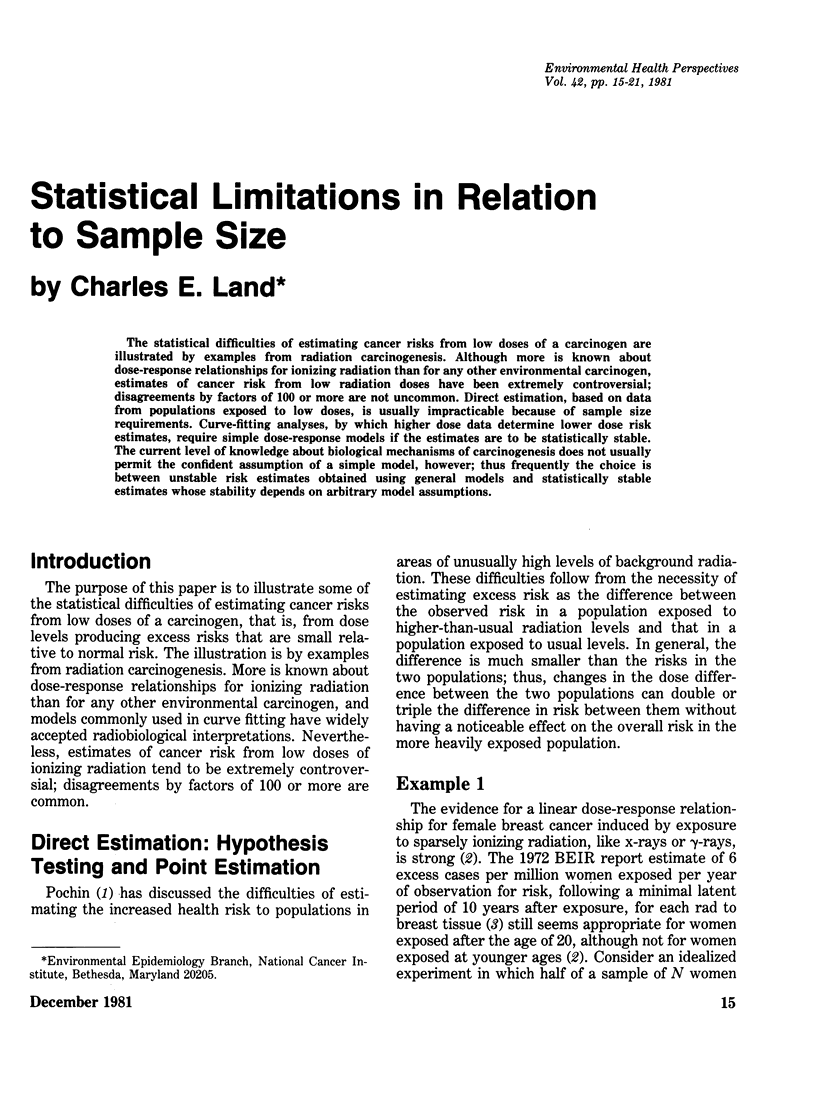
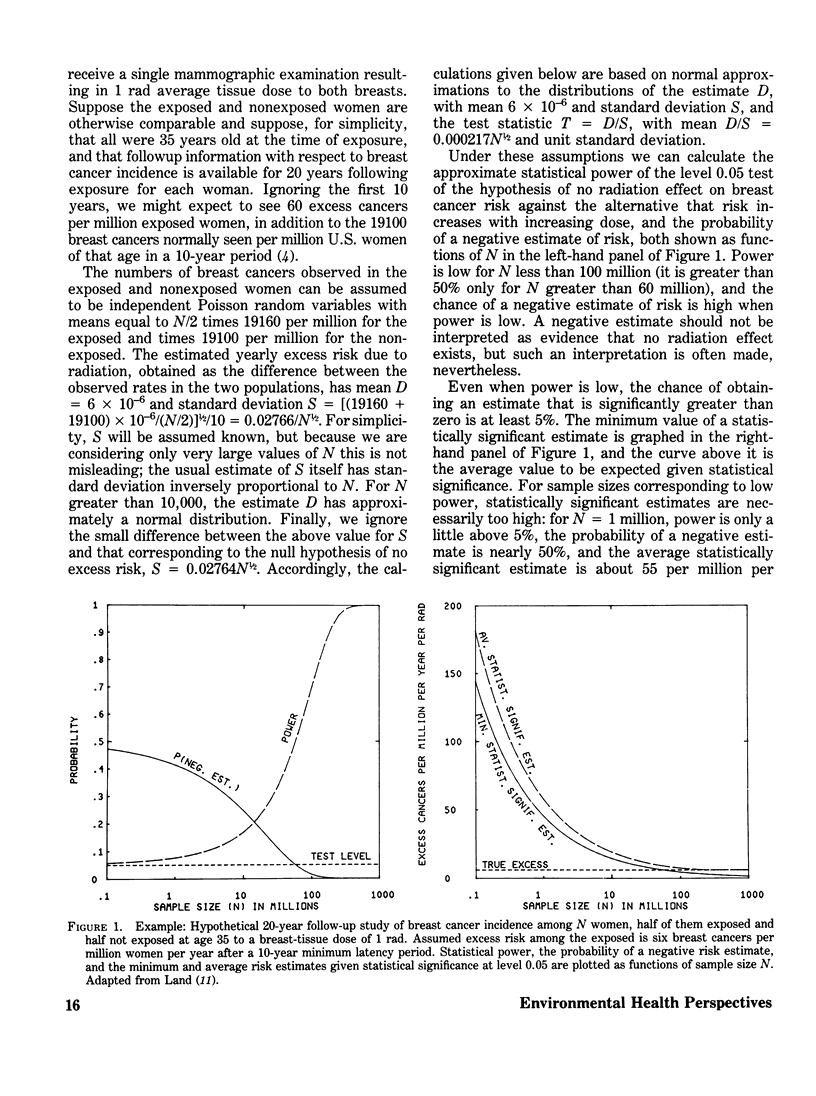
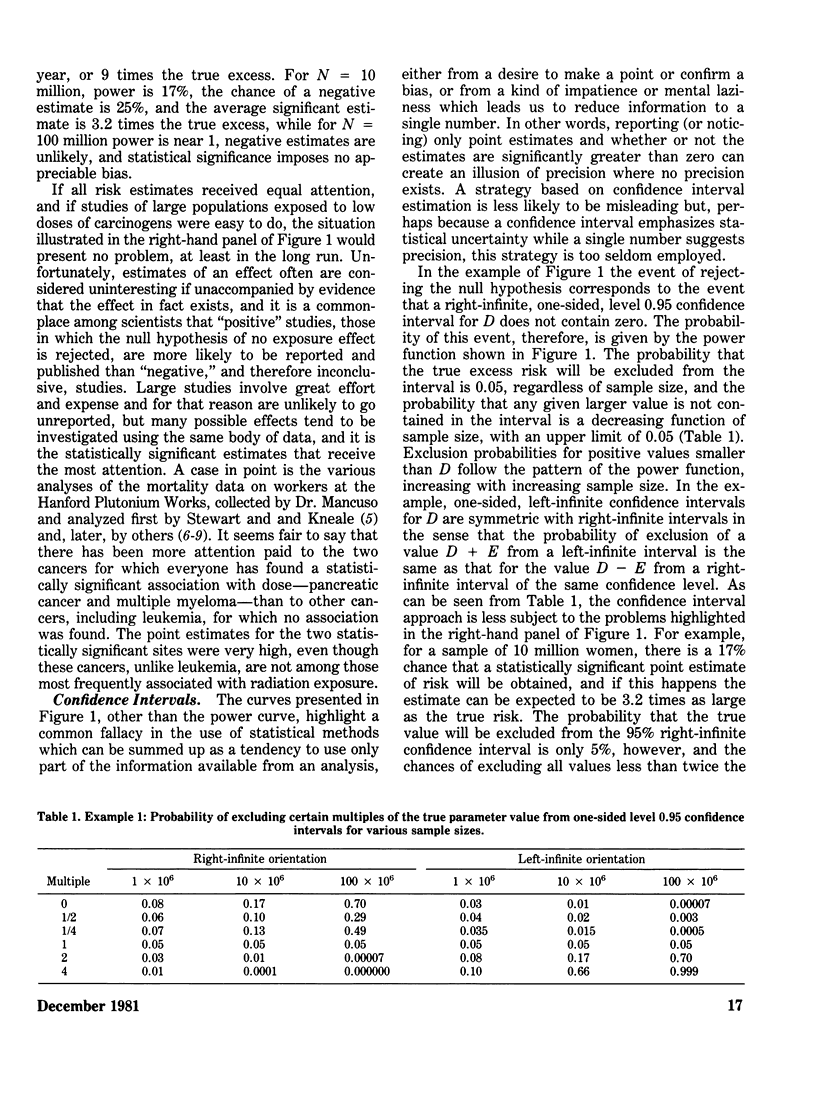
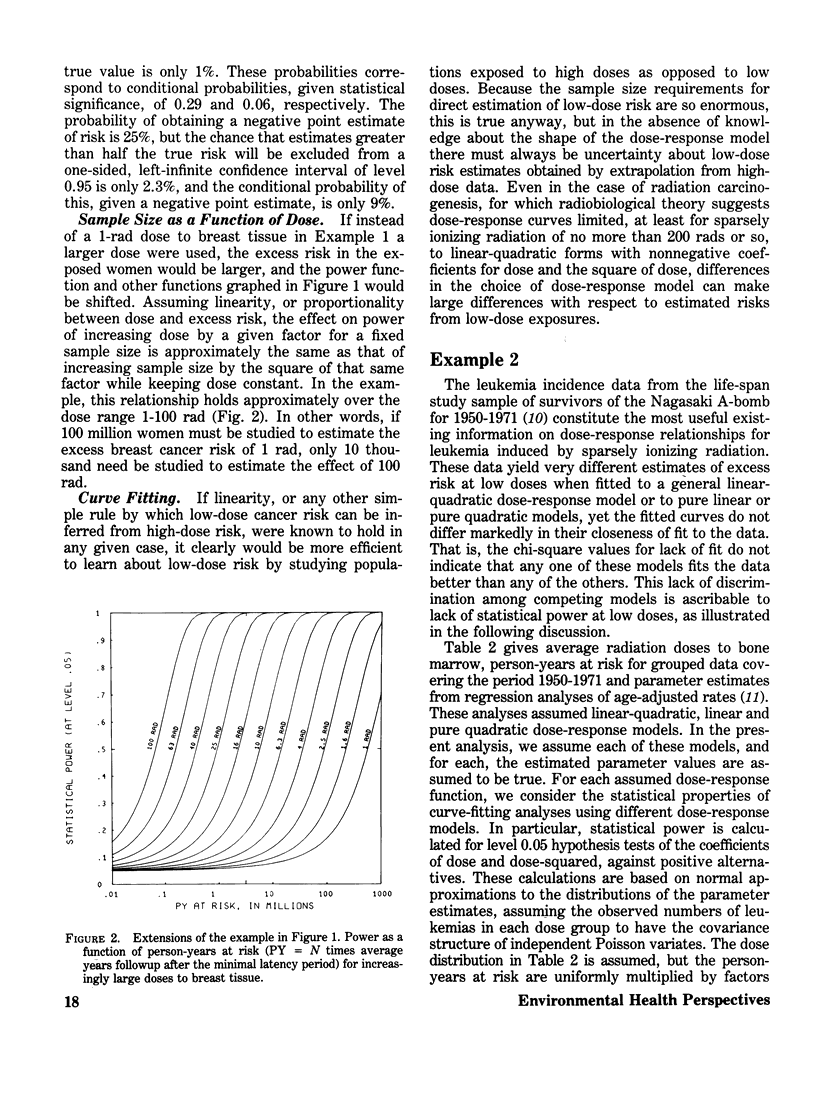
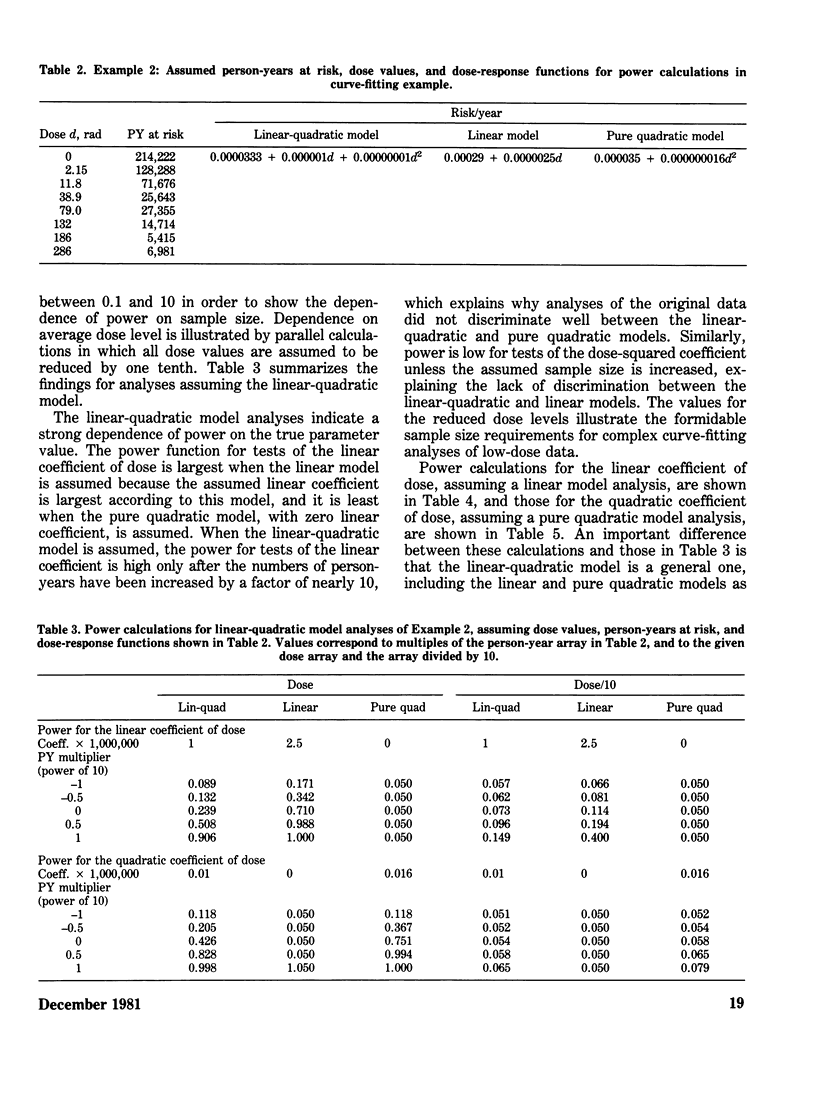
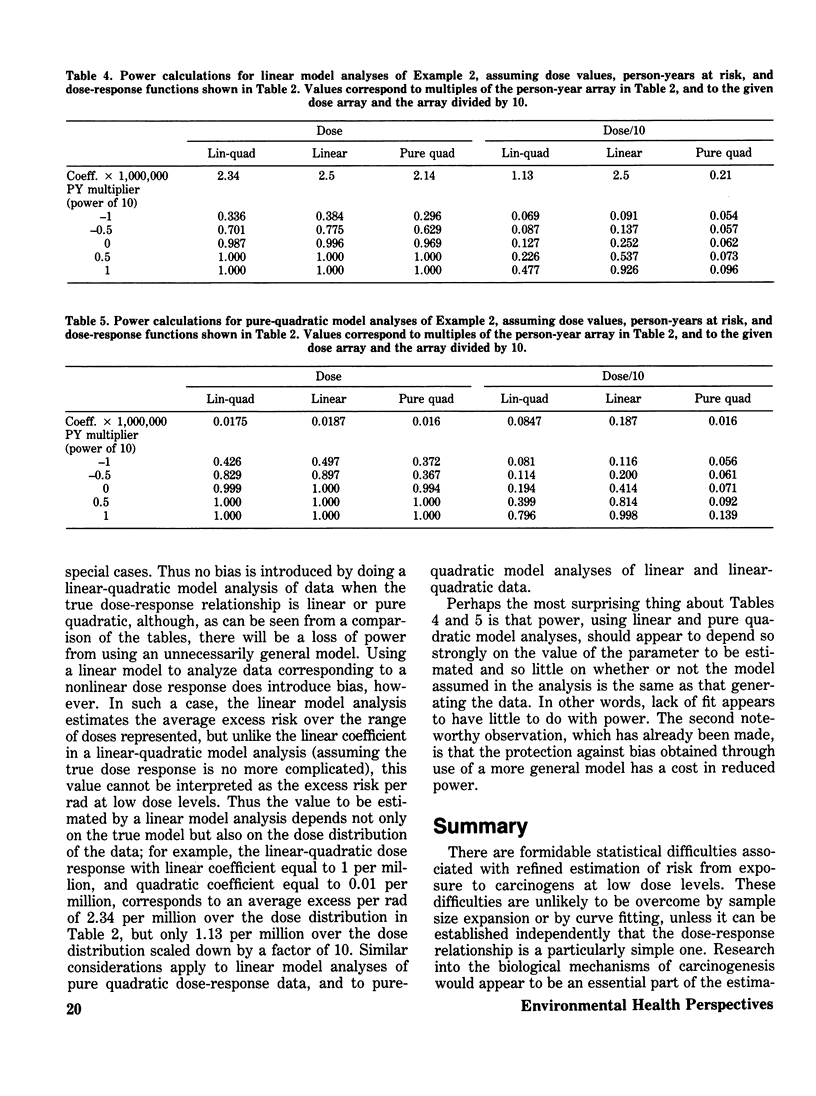
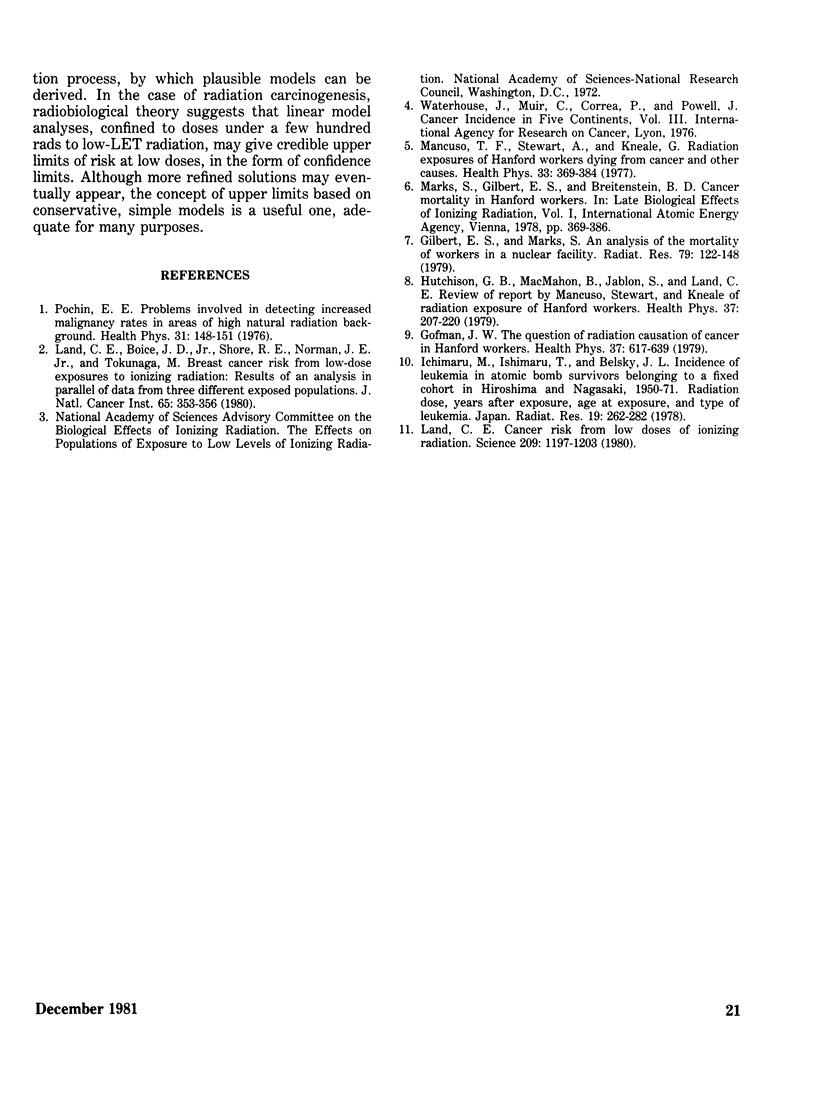
Selected References
These references are in PubMed. This may not be the complete list of references from this article.
- Gilbert E. S., Marks S. An analysis of the mortality of workers in a nuclear facility. Radiat Res. 1979 Jul;79(1):122–148. [PubMed] [Google Scholar]
- Gofman J. W. The question of radiation causation of cancer in Hanford workers. Health Phys. 1979 Nov;37(5):617–639. doi: 10.1097/00004032-197911000-00001. [DOI] [PubMed] [Google Scholar]
- Hutchison G. B., MacMahon B., Jablon S., Land C. E. Review of report by Mancuso, Stewart and Kneale of radiation exposure of Hanford workers. Health Phys. 1979 Aug;37(2):207–220. doi: 10.1097/00004032-197908000-00003. [DOI] [PubMed] [Google Scholar]
- Ichimaru M., Ishimaru T., Belsky J. L. Incidence of leukemia in atomic bomb survivors belonging to a fixed cohort in Hiroshima and Nagasaki, 1950--71. Radiation dose, years after exposure, age at exposure, and type of leukemia. J Radiat Res. 1978 Sep;19(3):262–282. doi: 10.1269/jrr.19.262. [DOI] [PubMed] [Google Scholar]
- Land C. E., Boice J. D., Jr, Shore R. E., Norman J. E., Tokunaga M. Breast cancer risk from low-dose exposures to ionizing radiation: results of parallel analysis of three exposed populations of women. J Natl Cancer Inst. 1980 Aug;65(2):353–376. [PubMed] [Google Scholar]
- Land C. E. Estimating cancer risks from low doses of ionizing radiation. Science. 1980 Sep 12;209(4462):1197–1203. doi: 10.1126/science.7403879. [DOI] [PubMed] [Google Scholar]
- Mancuso T. F., Stewart A., Kneale G. Radiation exposures of Hanford workers dying from cancer and other causes. Health Phys. 1977 Nov;33:369–385. doi: 10.1097/00004032-197711000-00002. [DOI] [PubMed] [Google Scholar]
- Pochin E. E. Problems involved in detecting increased malignancy rates in areas of high natural radiation background. Health Phys. 1976 Aug;31(2):148–151. [PubMed] [Google Scholar]


